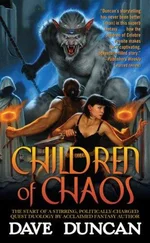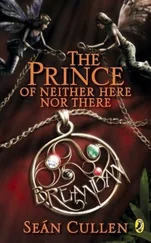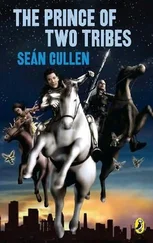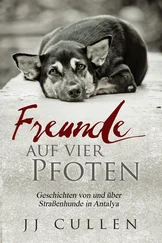One of them lit the rag used as a fuse on a Molotov cocktail. He set it on the table right above Patrick. Eric raised the shotgun barrel to his mouth, like the antihero of The Downward Spiral. Dylan pointed the TEC-9 at his left temple. The Molotov rag burned down.
Eric fired through the roof of his mouth, causing “evacuation of the brain.” He collapsed against the books, and his torso slumped to the side. He ended that way, with his arms curled forward, as if hugging an invisible pillow. Dylan’s blast knocked him flat on his back and strewed brain matter across Eric’s left knee. Dylan’s head came to rest just beside it.
A lot of blood spilled, but less than their victims’. Eric and Dylan blew out their medullas, the brain center that controls involuntary functions. Their hearts stopped almost instantly. Medically, “bleeding” ceased. Gravity took over and they leaked. Dylan’s blood soaked into Eric’s pant leg.
The Molotov blew. It started a small fire. It also spilled Eric’s crude napalm over the tabletop and sealed a lump of his brain underneath. That detail would prove the boys died just before the eruption. The alarm system detected the fire and recorded the time as 12:08.
The sprinklers put it out and drenched the boys. Blood drained from their skulls and oxidized like blackened halos.
Three hours later, police found Eric crumpled, Dylan sprawled leisurely. His legs flopped over to the side, one knee atop the other, ankles crossed. One arm draped across his stomach, underlining the word emblazoned on his black T-shirt. His head lay back, mouth open, jaw slack. Blood trickled out the corners, toward his ears. He looked serene. The red letters on his chest screamed wrath.
53. At the Broken Places

It took eight and a half years to erect the permanent memorial. In 2006, the fund hit 70 percent of its reduced budget, permitting construction to begin. An event was planned for the groundbreaking in June—to honor the dead, and to publicize the $300,000 outstanding. Bill Clinton flew in. Two thousand mourners turned out.
Dawn Anna read the thirteen names. “We’re here because we love them,” she said. “We’re here as a family and as a community that’s been through the darkest of days and is coming through to the light.”
Thunderheads rolled in and opened up on the crowd. Scattered umbrellas popped up, but most people were caught unaware. Nobody moved. They didn’t care.
This was Republican country, but Clinton’s introduction drew wild applause. These people were proud to host an American president.
“I am here today because millions of Americans were changed by Columbine,” he said. “It was one of the darkest days Hillary and I had in the White House. We wept, we prayed.”
Right before his appearance, she’d called from the Senate, he said—”Just to remind me of what we did that day. This was a momentous event in the history of the country. And every parent [was] left feeling helpless, even the president.”
He had watched the survivors evolve, Clinton said. He compared them to his colleague, Max Cleland, who’d left both legs and one arm in Vietnam. It was a struggle for Max to dress every morning. He could have resented the thousands who came back unscathed or who’d avoided the draft, like him, Clinton said. What a waste that would be. Cleland ran for the Senate and represented Georgia for six years. He was fond of quoting Ernest Hemingway, and Clinton recited his favorite passage: “The world breaks everyone and afterward many are strong at the broken places.”
“Every day, from now on, the world will break someone,” Clinton added. “These magnificent families, in memory of their children, and their teacher, can help them always to be strong.”
____
Patrick Ireland proposed to Kacie, the girl he’d met his first night at CSU. They would never have met, he pointed out, if he had not been shot.
They married on an August afternoon. Six bridesmaids in rose red gowns walked the aisle of an ornate Catholic church.
Mr. D came. He was struck by the sight of Patrick standing at the altar with no physical support. He was also taken aback by the number of classmates involved. It was a familiar pattern. For twenty years, he had watched alumni drift away from their high school buds, but the two thousand survivors stuck close.
Patrick walked out gracefully and composed. Mr. D wiped off a tear. Patrick’s doctor from Craig was there, still incredulous. So was Laura, the girl Patrick had been afraid to ask to prom.
The wedding party took a month of ballroom dance lessons to prepare for the reception. Patrick spun Kacie across the floor. They waltzed and two-stepped and did the fox-trot. They closed out the first dance with a deep dip. Patrick joined his mother for “Because You Loved Me.” Diane Warren wrote the song to her father for encouraging her when no one else believed. Kathy teared up quietly in her son’s arms.
____
Former agent Dwayne Fuselier was still being asked to address law enforcement groups and teachers’ conventions. They still wanted to know why? Fuselier kept agreeing to speak, insisting each presentation would be the last.
He continues to teach hostage negotiators in the Third World. He finds a lot more time for golf, and his mind wanders occasionally to Eric and Dylan—with no satisfaction, because the ending never changes.
Both his sons graduated from college and launched successful careers.
He still hopes to interview Eric and Dylan’s parents.
____
Brad and Misty Bernall resettled nearby in New Mexico. They are much happier there.
She Said Yes was reissued in two paperback formats, a library edition, and an audiobook. It has sold over a million copies. The Web is loaded with sites unabashedly recounting the myth. Cassie’s youth pastor was right: the church stuck with the story.
Local churches felt a surge following Columbine. Attendance spiked, fervor was unprecedented. It faded. Pastors reported no long-term impact.
____
The Harrises and Klebolds remained secluded. The Harrises eventually sold their house, but remained in the area. The Klebolds have not moved. In July of 2006, Dylan’s older brother, Byron, got married.
____
Kids at Columbine stopped using the word as the name of a massacre. It became just a high school again. Smokers returned to chatting up adult strangers who strolled through Clement Park near their pit. It did not occur to them to be afraid.
When a journalist stopped by to assess the return to normalcy, they were puzzled. Why would anyone be interested in their boring school? They really didn’t know. Their faces lit up when they discovered he was from the city. What were the clubs like? Had he been to Colfax Avenue? Were there really strip clubs and winos and hookers there?
Of course they remembered the tragedy. What an awful day. Their grade schools were locked down, everyone was scared. Several had had older siblings trapped in the high school. Their parents had been upset for months. So what was Denver like?
____
Mr. D had two grandchildren. His son settled into a career and his daughter got engaged. Frank didn’t let Diane Meyer get away the second time. After his divorce, they reunited in person. She was just as funny as in high school. Same blue eyes, same insightful mind and selflessness. “Someone to lean on,” Frank said. They began dating again. On Christmas Eve 2003, Frank asked her to marry him. She said yes. They remain engaged.
Mr. D informed his students he planned to retire. He will stay through graduation in 2012, or 2013. He will be fifty-seven or fifty-eight. He’s not sure what he’ll do then. Golf, travel, enjoy.
Читать дальше








